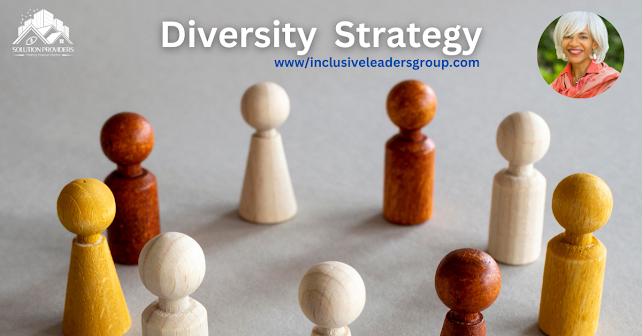Why Is Diversity Strategy Importan
The term “diversity strategy” is a collection of deliberate measures and procedures adopted by organizations to encourage and value diversity within their workforce and create an inclusive and equitable work environment. It entails fostering a culture that honors and respects individual distinctions related to racial, ethnic, gendered, age, sexual orientation, and other distinctive traits. A well-crafted diversity strategy focuses on using diversity as a business advantage rather than just adhering to regulatory obligations.
Why Is Diversity Strategy Important?

Enhancing Innovation and Creativity
Diversity in an organization brings together people from different backgrounds, ideas, and experiences. This diversity of thought encourages many methods of thinking, solving problems, and making decisions, which fosters innovation and creativity. A varied workforce promotes the development of original concepts and methods, which results in enhanced goods, services, and procedures.
Attracting and Retaining Top Talent
An organization’s ability to recruit and keep top personnel can be dramatically impacted by a strong diversity plan. People look for open and varied workplaces where they feel valued and respected in today’s globalized society. Organizations may recruit a larger pool of eligible individuals by fostering a diverse workforce, increasing competition, and improving business results.
Enhancing Employee Engagement and Productivity
Employees are more likely to be engaged and motivated at work when they feel valued for their individual contributions. Employee performance is maximized in a diverse and inclusive workplace that generates a sense of psychological safety and belonging. According to studies, diverse teams perform better overall as an organization in terms of employee satisfaction, productivity, and organizational outcomes.
Elements of an Effective Diversity Strategy
Leadership Commitment
Strong leadership commitment is the foundation of any successful diversity plan. By establishing clear objectives, dedicating resources, and holding themselves and others accountable for fostering an inclusive culture, leaders must tangibly show their commitment to diversity and inclusion.
Diverse Recruitment and Hiring Practices
Employ inclusive hiring and recruitment practices in order to create a diverse workforce. This entails disseminating job openings through a variety of networks, using a diverse panel for interviews, minimizing prejudice during the selection process, and giving each applicant an equal chance.
Training and Education
Programmed education and training are crucial parts of a diversity strategy. These programs support cultural competency development, bias and stereotype eradication, and awareness-raising. Organizations may promote an inclusive environment where diversity is celebrated and appreciated by arming staff with the proper resources and training.
Employee Resource Groups
Employee resource groups (ERGs) are voluntary, employee-led organizations that offer assistance, chances for professional networking, or both to particular demographic groups or interests. ERGs may empower workers, foster a feeling of community, and give organizational executives insightful input.
Inclusive Policies and Practices
All parts of an organization’s policies and practices should be inclusive. This entails encouraging equitable possibilities for career progression, providing flexible work schedules, meeting the demands of a variety of clients, and making sure that performance reviews and rewards are impartial and fair.
Conclusion
Organizations must embrace diversity as a strategic advantage in the diversified and globalized world of today. An inclusive workplace climate, creativity, the attraction of top talent, and increased employee engagement and productivity are all benefits of a well-developed diversity strategy. Organizations may foster a culture where each person feels appreciated, respected, and encouraged to share their distinctive ideas and talents by committing to diversity and inclusion.
Frequently Asked Questions (FAQs)
1. Why is diversity important in the workplace?
Diversity in the workplace is crucial because it brings together people from various backgrounds, experiences, and viewpoints, which fosters greater innovation, creativity, and problem-solving. Additionally, it boosts overall organizational effectiveness and aids in luring and keeping top people.
2. How can organizations promote diversity and inclusion?
By using diverse hiring and recruitment practices, delivering training and education on cultural competency, forming employee resource groups, and ensuring inclusive policies and practices, organizations can promote diversity and inclusion.
3. What are the benefits of having a diverse workforce?
Increased innovation, better decision-making, greater customer comprehension, higher levels of employee engagement and productivity, and improved organizational performance are just a few advantages of having a diverse workforce.
4. How can leaders support diversity and inclusion?
By showing a commitment to diversity, establishing specific goals, providing resources, supporting inclusive behaviors, and developing an inclusive culture throughout the organization, leaders may encourage diversity and inclusion.
5. How does diversity contribute to organizational success?
By stimulating creativity, supporting innovation, recruiting top talent, increasing employee engagement and productivity, and boosting decision-making processes, diversity supports organizational success.

Comments
Post a Comment